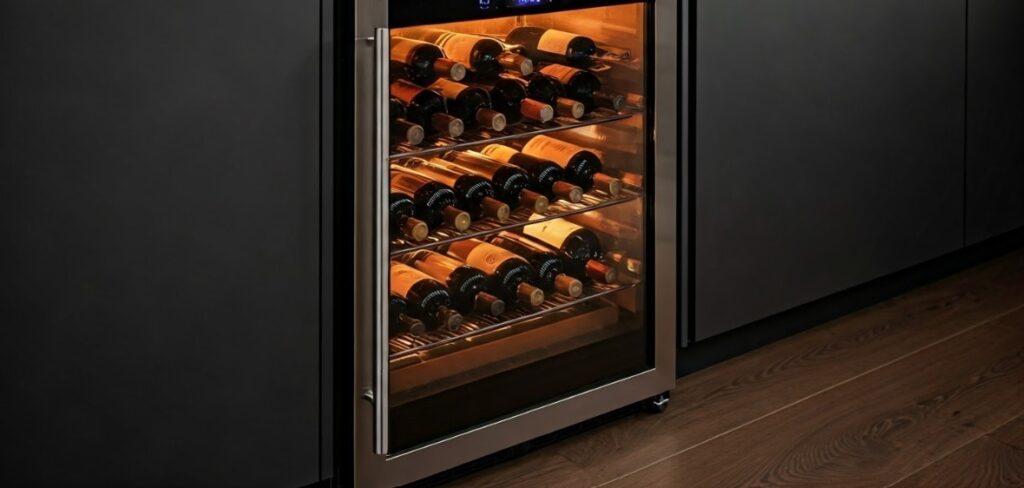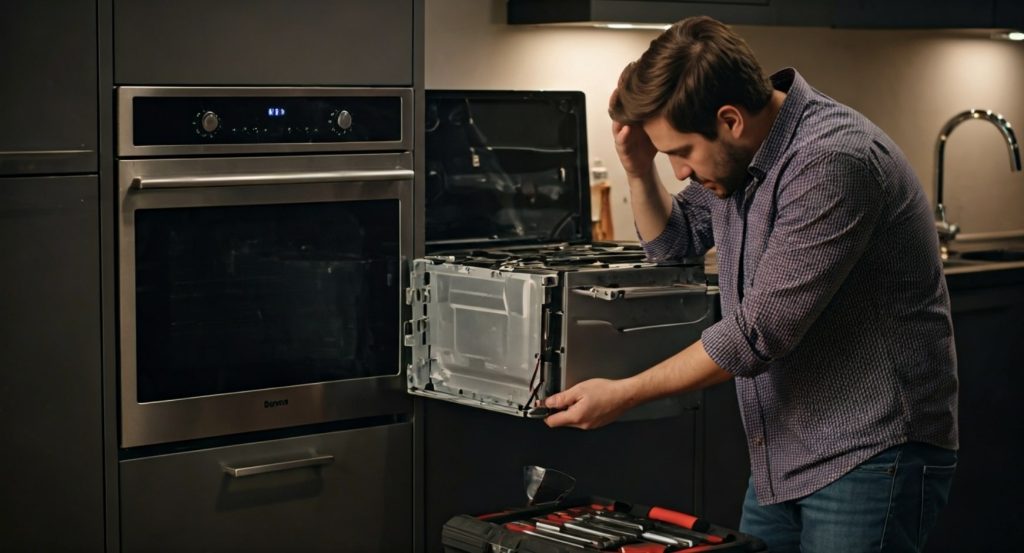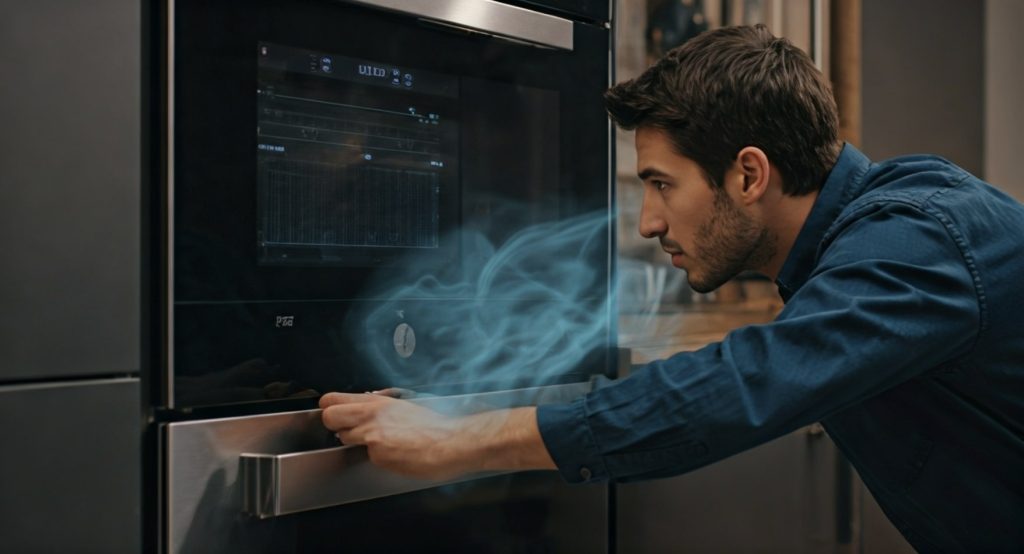A noisy wine fridge can be bothersome. Some noise is normal for these appliances, but too much or strange sounds might mean there is a problem. This thorough guide will help you find common reasons and how to fix a noisy wine cooler. This way, you can bring back the peace in your home and keep your appliance working well.
Understanding the Common Causes of Wine Cooler Noises
Wine coolers, like all fridges, have parts that make some noise while they work. The key parts are the compressor, fan, and refrigerant flow system. These parts are very important to keep your wine at the right cool temperature. Knowing what normal sounds these parts make helps you notice if there are any problems.
Common reasons for noise in wine coolers include vibrations from the compressor or fan, sounds from the cooling system, or gurgling as the refrigerant moves. Most of these sounds are normal. But, if the noises get too loud or change a lot, you should check it out and fix any problems.
Preparing to Troubleshoot Your Noisy Wine Cooler
Before you begin taking apart your Viking wine cooler or other brand, it’s important to gather the right tools and know some basic safety tips. This will help make your repair safe and successful.
Make sure to check your user manual for instructions that match your model. If you feel uneasy about working with electrical items or refrigerant, it is a good idea to reach out to a qualified technician for help.
Tools and Resources Needed for DIY Fixes
Before you start, make sure you have these tools ready:
- Level: To check if your wine cooler is even.
- Screwdriver (multi-bit): To tighten loose screws and open panels.
- Cleaning Supplies: Warm soapy water, a soft cloth, and a vacuum cleaner with a brush for cleaning the condenser coils and fan area.
- Flashlight: To light up dark spots inside the appliance.
Having these tools nearby will help you troubleshoot problems easily and fix common issues effectively.
Safety Precautions Before Starting Repairs
Safety should always come first when you work on any electrical appliance. Before starting any repairs or maintenance on your wine fridge, make sure to unplug it from the power outlet. Stay away from refrigerant lines or parts, as they may have harmful substances. If you think there might be a refrigerant leak, make sure to air out the room and call a qualified technician right away.
Wear the right safety gear, like gloves and goggles, especially when you are cleaning dust or debris. Don’t force open any panels or compartments. Instead, check your user manual for help. If you are not sure, it is usually better to be safe and reach out to a professional.
Step-by-Step Guide to Quieting Your Wine Cooler
Now that you know the common sounds your wine cooler makes and what might cause them, let’s look at some simple steps to quiet your appliance and bring peace back to your home.
Don’t forget to unplug your wine cooler before you start any fixes or checks.
Step 1: Inspecting and Cleaning the Fan Area
The fan is a key part of the cooling system. If the fan is dirty or blocked, it can make more noise and work less well. To clean it, take off the back panel of the wine cooler carefully. You can use a soft brush or a vacuum cleaner to dust off the fan blades, motor, and nearby parts.
Be very careful when cleaning the fan blades so you don’t bend them. After you clean it, check that the fan turns easily without any trouble. If you see any damage to the fan blades or hear strange noises from the fan motor when it runs, it’s best to replace the fan completely.
Step 2: Checking and Adjusting the Cooling System
The compressor helps circulate the refrigerant. It can make noise if it is working too hard or not working right. Check around the compressor for any loose screws or parts. Tighten any loose connections carefully. Make sure the condenser coils, which are usually at the back or bottom of the appliance, are clean and not dusty. Dirty condenser coils can cause the compressor to work harder. This can make more noise and might damage the appliance.
If you think the compressor is broken, it’s important to call a trained technician. They can check it and decide if it needs to be replaced. Trying to fix or change a compressor without the right tools and knowledge can be dangerous. It may also void your warranty.
Step 3: Evaluating and Securing Internal Components
Loose shelves, bottles, or other internal components can vibrate and cause rattling noises, particularly when the appliance is in use. Check for any rattling or vibrating parts. Ensure shelves are properly secured, and bottles are not touching each other or the sides of the wine cooler.
Use the table below as a guide to identify and address specific internal component noises:
| Noise | Possible Cause | Solution |
|---|---|---|
| Rattling | Loose shelves or bottles | Secure shelves, rearrange bottles to avoid contact |
| Buzzing | Faulty fan motor or obstructed fan blades | Clean fan blades, replace fan motor if necessary |
| Clicking | Thermostat cycling, defrost timer, ice maker (if any) | Adjust thermostat settings, ensure defrost drain is clear |
| Humming | Compressor operation, evaporator fan | Check for loose components near the compressor, clean fan area |
| Gurgling | Refrigerant flow | Generally normal, but contact a technician if accompanied by poor cooling |
Advanced Tips for Maintaining a Quiet Wine Cooler
Keeping your wine fridge in good shape is important for it to work well and to reduce noise problems. You should clean the condenser coils at least every three months. Use a vacuum or a soft brush to remove dust. Check the fan area too and clean any dust on the fan blades and motor.
Look at the door seal for any damage. A broken seal can let cold air out. This makes the cooling system work harder, which can increase noise. Finally, pay attention to where you place your appliance. Don’t put your wine fridge in direct sunlight or near heaters. This can make it less efficient and create more noise.
Contact Viking Repair Pro for Expert Service
If you have tried all possible fixes and the noise problem is still there, it’s time to call the experts. At Viking Repair Pro, we offer great repair and maintenance services for all types of wine coolers. Our skilled team can handle any issue to make sure your appliance works well again. We know how important it is for your wine cooler to be quiet and efficient. This is key for keeping your valuable collection safe. We are committed to keeping our customers happy. We work hard to offer timely, dependable, and affordable solutions that fit your needs.
Conclusion
Keeping your wine cooler quiet is very important for taking care of your wine collection. By using the troubleshooting tips on how to fix a noisy wine cooler in this guide, you can solve common noise problems easily. Make sure to look at and clean the fan area. Also, check the cooling system and tighten internal parts for the best performance. If you need more help or professional service, contact Viking Repair Pro. It’s important to keep your wine cooler peaceful so that your wines can age well. If you want to know more about caring for wine coolers, visit our comprehensive blogs on expert wine cooler care.
Frequently Asked Questions
Why is my wine cooler louder than usual?
Your wine cooler might be louder than normal for a few reasons. This can include a dirty fan, parts that are shaking, or issues with the cooling system. You can fix these problems by cleaning the fan, making sure the appliance is level, and checking for any loose parts.
How often should I service my wine cooler to avoid noise issues?
It is best to service your wine cooler once a year. Doing this will help keep it running well and avoid problems like noise. Regular care includes cleaning the condenser coils, checking the refrigerant levels, and looking for any signs of wear and tear.
What signs indicate that my wine cooler noise is due to a serious problem?
If you hear a sudden increase in noise or strange sounds like grinding or screeching, pay attention. If the noise is also linked to bad cooling, this could be a sign of a serious issue. It is important to get professional help.









